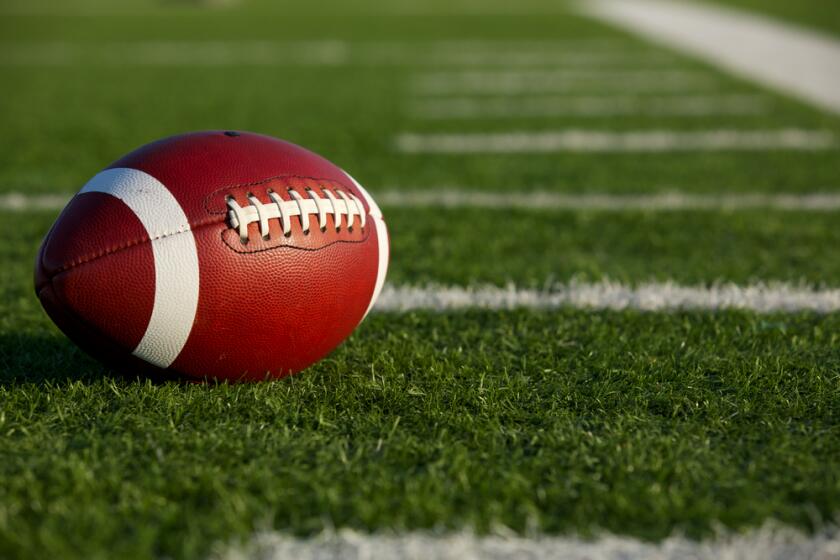Rah Rah Royalties
- Share via
How much is a national championship worth?
Licensing administrators at colleges estimate that a national football or basketball championship can be worth as much as $200,000 to $400,000 in additional royalties from product sales.
That probably explains why the two sales leaders are believed to be Notre Dame, the reigning national champion in football, and Michigan, the Rose Bowl and NCAA basketball winner. Both schools take in about $1 million a year in licensing revenue, although Michigan officials believe that they may reap as much as $1.5 million this year.
Schools that are among the revenue leaders are often in states such as Iowa, Nebraska or Oklahoma, which don’t have professional sports teams.
Markets for schools vary considerably. At the University of Iowa, which receives about $500,000 in royalties a year, officials say sales of university-related products are spread throughout the state and that the largest market is probably Iowans who are simply fans, not alumni or students.
At Michigan, by contrast, officials say 80% of university-related products are sold to alumni.
In recent years, schools have seen growth in sales to “subway alumni,” slang for people who never attended their school but who became fans watching teams play on television. The number of subway alumni has grown considerably with the growth of cable television stations such as sports channel ESPN and satellite super stations.
USC officials believe that the school’s royalties suffer from competition from so many local professional sports teams.
Piracy is a constant problem for licensing administrators.
The NCAA doubles its enforcement efforts during the week of its “Final Four” championship basketball tournament.
At USC, officials found someone was selling T-shirts featuring the profile of a Trojan warrior that appears on the side of the football team’s helmets.
But that isn’t the official Trojan symbol used for T-shirts. The licensed Trojan symbol for shirts shows a warrior with tapered plume on his helmet that hangs down the back of his neck, somewhat resembling the tail of a Davy Crockett-style coonskin cap.
By contrast, the warrior gracing the football team’s helmet has plume that stops at his neck. USC trademark licensing manager Elizabeth Kennedy said some believe that warrior is actually wearing a Spartan helmet. Experts in ancient armor could not be reached for a definitive answer.
Colleges undoubtedly regret taking so long to get into the licensing business. For years, they received no money from sales of products.
When asked about it, administrators are at a loss to explain, except that no one really thought about it years ago or saw the potential. Now schools even have a trade association, the 3-year-old Assn. of College Licensing Administrators.
UCLA is credited with being the first to start a licensing program in 1973, followed by such schools as Ohio State, Michigan and Penn State. Ivy League schools, with the exception of Princeton, have been the slowest at developing programs, licensing officials say.
Stuffed mascots have proved lucrative at some schools.
Ohio State sells “Brutus Buckeye” dolls. The biggest seller is said to be the University of Florida’s “Albert,” a cartoon-like alligator.
More to Read
Go beyond the scoreboard
Get the latest on L.A.'s teams in the daily Sports Report newsletter.
You may occasionally receive promotional content from the Los Angeles Times.










